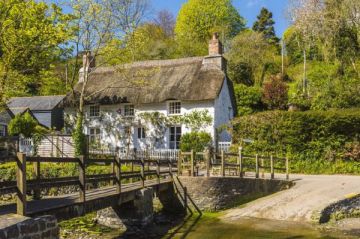(1824-1881)
George Edmund Street was one of the most prominent architects in Victorian England, a man responsible for popularising the Victorian Gothic style.

Street was born 20 June 1824 in Woodford, Essex. He studied architecture in Winchester under Owen Carter, then worked for 5 years at the busy offices of Sir George Gilbert Scott. In 1849 he set up in practice for himself. For three years he travelled around Europe, studying historic architecture in Germany, Italy, and France. He drew upon these experiences to publish The Brick and the Marble Architecture of Northern Italy in 1855.
The book was highly successful, and heavily influenced and inspired other architects. Subsequent European travels to Spain resulted in the 1865 volume, The Gothic Architecture of Spain, another very influential work.
In the meantime, in amongst all the travelling and publishing, Street's architecture practise was growing. Street became Diocesan Architect of Oxford, under Bishop Wilberforce. He established his base of operation in Oxford, where he designed the Oxford Diocesan Theological College at Cuddesdon, and St Mary's, Wheatley.
The latter is typical of Street's style; inspired by Early English (Pointed) architecture, with plate-tracery windows and a squat tower topped by a slender spire. The effect is rather spartan and severe.
Street married Mariquita Proctor in 1852. Mariquita died in 1874, and he married again to Jessie Holland in 1876.
Street moved his practice back to London, where he was very busy designing churches in variations of the High Victorian Gothic style. Most are in what we would call 'Middle Pointed' English Gothic, though he also drew on his studies in Italian and French design.
His work was often severe, but he always used high-quality materials and first-class workmanship, with fine, even obsessive attention to detail. Street took an interest in every aspect of his designs; he was a perfectionist, and his work was an expression of his deeply held religious beliefs.

Street was High Church, and like another influential Victorian Gothic architect, William Butterfield, was active in the Ecclesiological Society. He was accepted into the Royal Academy in 1871, and served as Professor of Architecture for the Royal Academy Schools. He also served one term as President of the Royal Society of British Architects.
Two of his employees became as well known as Street himself; Philip Webb worked in Street's offices in 1856-57 as senior clerk, at the same time that Arts and Crafts pioneer William Morris was an apprentice
Churches for which Street is best remembered include:
- St James the Less, London (1860)
- St Philip and St James, Oxford
- All Saints, Clifton, Bristol
- St John, Kennington
- St John, Torquay, Devon
- St Mary, Fawley, Berkshire
But the building for which he is chiefly known is not a church at all, but one of his rare secular designs; the Law Courts, in The Strand, London. Though he won the design competition for the Law Courts in 1866, the project dragged on for so many years that he died before the building was finished, a death brought on, perhaps, by the stress of the work. Here again, the Gothic style draws upon Street's favourite period, the 13th century.
In addition to his own designs, Street was responsible for an extraordinary amount of church restoration work. Over his career, he held several diocesan posts, and in this capacity, he was responsible for renovating or completely rebuilding numerous medieval churches. It is not too extravagant to claim that without Street's efforts many fine medieval churches that we can still enjoy today would no longer be with us.
If you have even casually visited historic churches, particularly in the south of England, chances are you have run up against Street's name. You may have seen churches restored under his direction without realising it. Sometimes it seems easier to find a medieval church that Street did NOT have a hand in restoring!
GE Street died 18 December 1881 and is buried in Westminster Abbey - which tells you all you need to know about just how highly regarded he was in his time.
Places to see:
Attractions associated with GE Street



